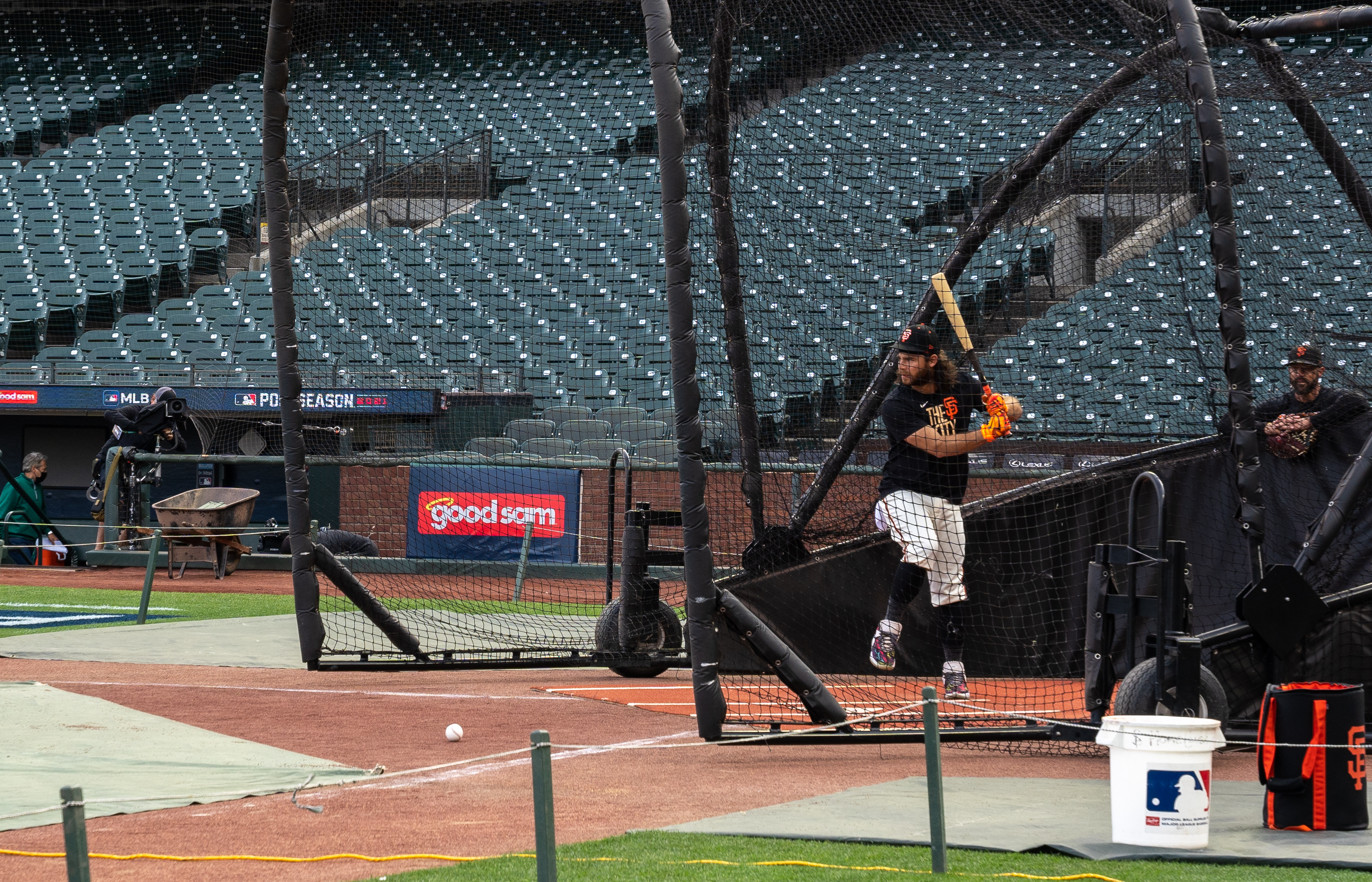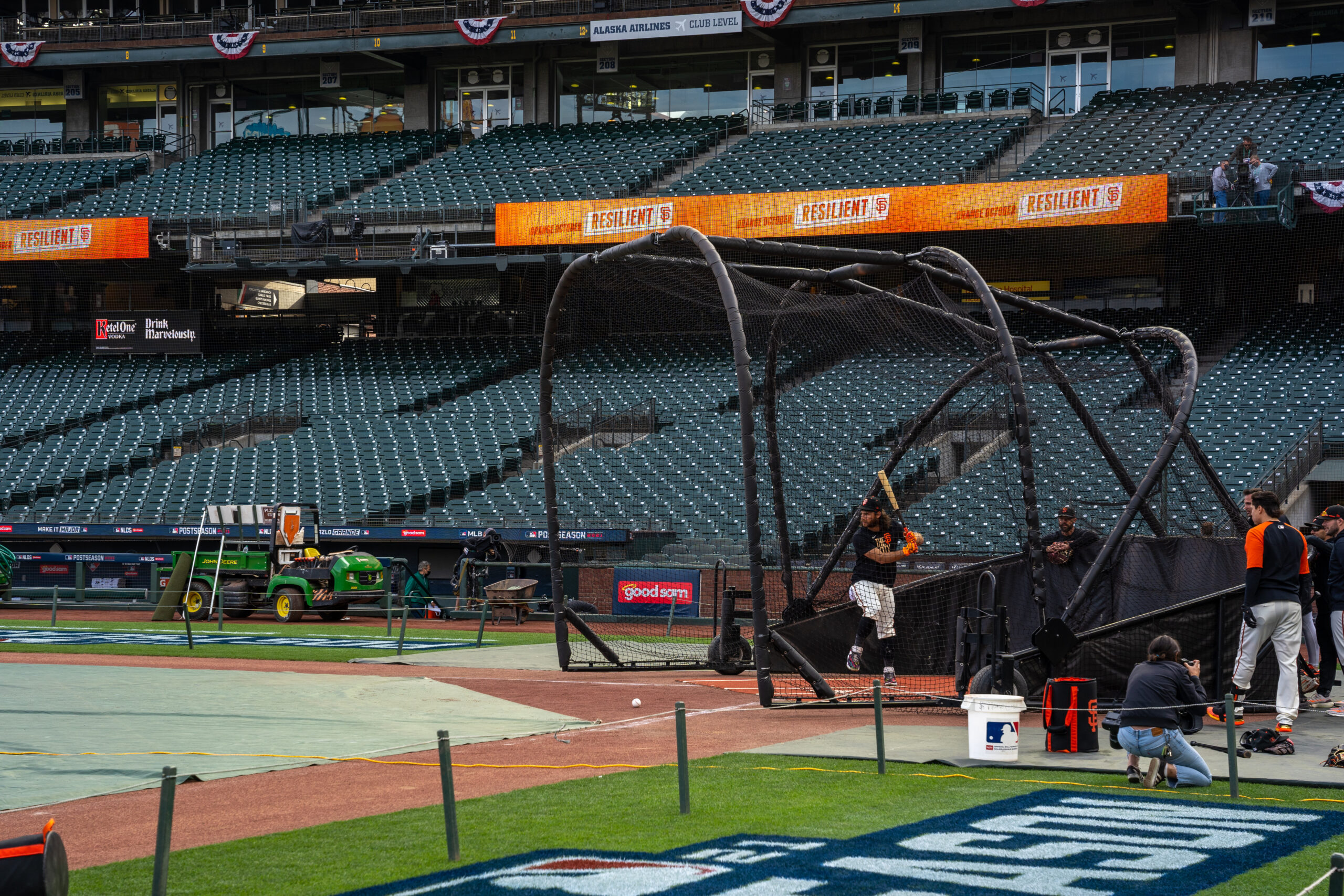
The San Francisco Giants put together a stellar season this past year, finishing the regular season with a staggering 107 wins and 55 losses — the best record in both Major League Baseball and the club’s history. Although falling out of the playoffs in a five-game National League Divisional Series to the Los Angeles Dodgers last week, the Giants were the first team to punch a ticket to the postseason.
The twist? This kind of success from the Giants was unexpected. So, how did they do it?
The answers aren’t so simple, as there are many reasons that propelled the team’s rise. But one thing can be said: the Giants broke the mold that defines a traditional baseball team.
“I was pretty surprised because (the Giants) didn’t change much of their team. It was a miracle they were able to pull that out from the team they had,” said Sebastian Lopez ’24, a Lick-Wilmerding second baseman, when asked about the Giants’ rise this recent season. “I was sad that they lost,” he said, referring to the playoff-eliminating series against the Dodgers, “but I’m glad they got as far as they did with the same players without needing to trade away a bunch (of them) to go for a big one-year push.”
Prior to the 2021 baseball season, the Giants were in the retooling process with small trade acquisitions. During those few seasons, the team showed hints of what was rising beneath the surface.
As Yeshayah Goldfarb, the Vice President of Baseball Operations said, “The ship was turning,” when referring to the depth of position players that the front office was building into the team.
While the Giants may seem like an overnight success story, the reality is the team’s breakthrough was years in the making – and for the breakthrough to happen was only a question of when.
During spring training, the team flew under the radar of sports analysts and the power rankings. Among the top sports outlets, ESPN projected a 70-92 season record for the Giants and a 1.2 percent chance of making the playoffs. Goldfarb knew that the team would outperform the expectations analysts had forecast after watching the team during spring training.
“I thought they (the Giants) were better than people knew. Inside it was kind of our own little secret,” Goldfarb said, referring to spring training. “I don’t think we realized or would have thought we would be this good this fast.”
The team showed what it was capable of early on in the season. The Giants proved their worth in June versus the Arizona Diamondbacks, making a spectacular comeback.
Falling behind seven runs to zero early in the game, it looked as though the Diamondbacks would put an end to their 15-game losing streak. Yet the Giants clawed their way back with a grand slam late into the night from right fielder Mike Yastrzemski. Yastrzemski’s grand slam was a splash hit and gave the Giants a one-run lead that they held on to and won with.
“The Giants had already been playing well and had established themselves as a really good team, but it was the kind of night that made me think, wow, this is going to be a special team this year,” said Dave Flemming, the Giants play-by-play announcer, referring to the comeback. “Because typically you don’t win games when you fall behind seven to nothing.”

The Sacramento River Cats, the Minor League AAA affiliate of the Giants, played a crucial role in the success of the Giants’ twenty-six player roster.
The River Cats are more than a team where players develop and hone their skills for the MLB. They are a team where players are optioned or recalled from for the Giants to have an optimal lineup versus each opponent. In essence, while a multitude of players is available for the Giants to play on their MLB roster, many of those players remain fluid between the major league roster and the Sacramento roster.
Most of the young stars on the Giants who broke out the past season spent time developing with the River Cats. To name a few: Logan Webb, Lamonte Wade Jr., and Camilo Doval.
A starting pitcher with the Giants whose breakout paralleled the team’s, Webb is a perfect example of the effectiveness of the Giants farm system, which provides players with a pathway to the majors. Webb was drafted by the Giants from nearby Rocklin High School in 2014.
Success was not immediate for Webb – he had to battle to get where he is now. In 2016 he suffered a potentially career-altering injury and underwent Tommy John Surgery, yet he came back stronger. The past season, Webb soared to new heights and became a top pitcher for the Giants, as well as the youngest player among the top ten pitchers holding the lowest earned run averages in the league.
As the Giants ace in the postseason, Webb pitched two masterpieces in the National League Division Series against the rival Dodgers, during which he showed excellent command of the ball. In his first postseason appearance, Webb successfully shut out the Dodgers—an astounding feat for a rookie. Webb gave up just one run in his second appearance, raising his ERA for the series to an outstanding 0.61.
“It’s fun to watch a player that your organization drafted and developed grow up being a difference-maker on the team,” Goldfarb said of Webb.
Doval made his major league debut for the Giants in April. He initially struggled with locating his pitches, which resulted in him spending more time developing with the River Cats.
When called upon during the second half of the season, Doval showed improved accuracy with his pitch mix of a triple-digit fastball and sharp slider, elevating him to the role of the Giants’ closer. In September, he was named the relief pitcher of the month, during which he racked up fourteen scoreless appearances. Doval posted an ERA of 3.00 for his rookie season and an ERA of 2.45 in the postseason.
Wade Jr. joined the Giant this past year via trade. His success at the plate can be attributed to the three of the Giants’ hitting coaches, described by Goldfarb as “excellent” and “the best I’ve been around.” “He’s (Wade Jr.) always been able to have competitive at-bats. And then they’ve helped him learn how to work with them.”

Through the coaching at the Giants’organization, Wade Jr. broke out into a power hitter the past season with a career-high of eighteen home runs and earned the nickname of “Late Night Lamonte,” after consistently coming through with key hits late into games. He led the league in Fangraphs Clutch since June, a stat measuring hitters’ ability to contribute in key moments.
Taking the helm as manager (head coach) of the Giants in the 2020 season, Gabe Kapler brought on a new hand-picked coaching staff with him after undergoing a rigorous hiring process. Yet there was a surprise — the new staff included coaches who had not stepped foot onto a professional baseball field when a common prerequisite of MLB coaches includes experience as an ex-player.
However, these coaches proved to be impeccable in their work and quickly slashed doubts. Experience around baseball proved to be unneeded, as these coaches were extremely capable and great teachers in each area they specialized in, such as developing power in a swing.
“The coaches quickly won over the veteran players — Crawford, Posey, and Longoria,” said Joan Ryan, author of the New York Times best-seller Intangibles. “If you don’t get buy-in from those four guys, you’ve lost the team — you don’t get buy-in from anyone. That’s the key.”

“Big-league ballplayers and professional athletes respect results. This staff had to earn the credibility of ‘Hey, what we are teaching and what we are coaching works and is going to make you a better player,’” Flemming said referring to the new coaching staff. “The Giants watched their teammates getting better and getting good results.”
Not only did younger players have breakthrough seasons, but veteran players reached back in time, finishing the season with stats mirroring their prime seasons, due to the coaching staff.
For the first time in years, Posey was healthy and back behind the plate as starting catcher. Crawford made spectacular defensive plays at shortstop and Belt locked down first base. However, they all took their hitting to the next level.

Kapler maximized the depth in the roster to its full advantage by putting players in optimal situations versus opponents. Instead of using the same nine starters, the lineups changed for each matchup. This broke the traditional concept that the nine starters on the roster earn their roles. Instead, each player on the roster has become a role player — something previously often seen as a knock on the player’s ability.
Open communication from the coaching staff to the players helped channel success to this transition. “Kapler is an extremely good communicator, so all the players on the team have a good idea about their role. They’re all bought in and that’s a product of his leadership,” said Goldfarb.
Typically, traditional baseball teams rely on a handful of star players to win games. But with the Giants, most of the roster will have played by the end of their games. Wins happen from the contribution of all players to their roles.
“The Giants’ system of using their bench was the number one differentiator of this team this year. Not only did they get better matchups within a game than any of their opponents, (but) they are always searching for the best matchups in the biggest situations, and that pays off big time,” said Flemming.
“Farhan Zaidi, our president of baseball, and Scott Harris (General Manager) deserve a lot of credit as well because you can’t do that without a deep roster,” Goldfarb said.
The players have accepted the idea of being role players and understand that there’s a role to fill each game. The roles change against each opponent and fluctuate during games. It is as though the Giants have a counter move for every move made by their opponents, forcing their opponents to react. For opponents, this made the Giants a hard team to manage against.
Sometimes, pitchers were used for a short inning or even as short as for a single at-bat, where they had an advantage over the hitter they were facing and could contribute to the team.
An area where the Giants shined was their pinch-hitting. Kapler had success with this in the past and brought it with him to the team. The Giants led the league with pinch-hit home runs and RBIs (runs batted in). Traditionally, pinch-hitting was reserved for a few players who specialized in hitting, yet the Giants successfully utilized several different players.
The consistent success of the Giant’s pinch-hitting is astounding, as pinch-hitting is one of the hardest things to do well in baseball. Players come off the bench cold and are expected to perform in big situations.
Ryan described the Giants’ pinch-hitting success by saying “It’s emblematic and representative of how that team operates. There are no bench players, everybody expects to contribute and you better be ready. Those pinches, or evidence of the ethos of this team, is there’s nobody sitting back and the rest of the team is doing all the work. And it also keeps every player feeling valued.”
Reflecting on this past season, the Giants have proven that a team can bond together selflessly, working with one another to elevate the success of the team built on contributions from each player.
“Players understand the role, and that we’re going to put them in a position to succeed. We’re all in it together every single day and not dependent on two or three or four everyday players,” said Goldfarb. “I think that the culture that has been created has bred success up and down the roster. Because confidence has been built around it and they’ve had success.”
Special thanks to Dave Flemming, Yeshayah Goldfarb, Daniel Tesfai, Joan Ryan, and Staci Slaughter for the contributions they made to make this article possible.






